Tuesday, 12:30pm
2 August 2022
Sparks of inspiration
A new software package enables designers to render computer algorithms in print – embracing creative randomness and chance

HP Spark is a new printing process with software that gives designers the ability to bring creative coding into their print work and produce generative art and design. Developed by Oswin Tickler in collaboration with HP Indigo, the designer has documented his own explorations in a project called Fusing Frontiers – a selection of postcards, imaginary maps and booklets that he made with digital print specialists FE Burman.
Prints of The New Heraldry from Fusing Frontiers.
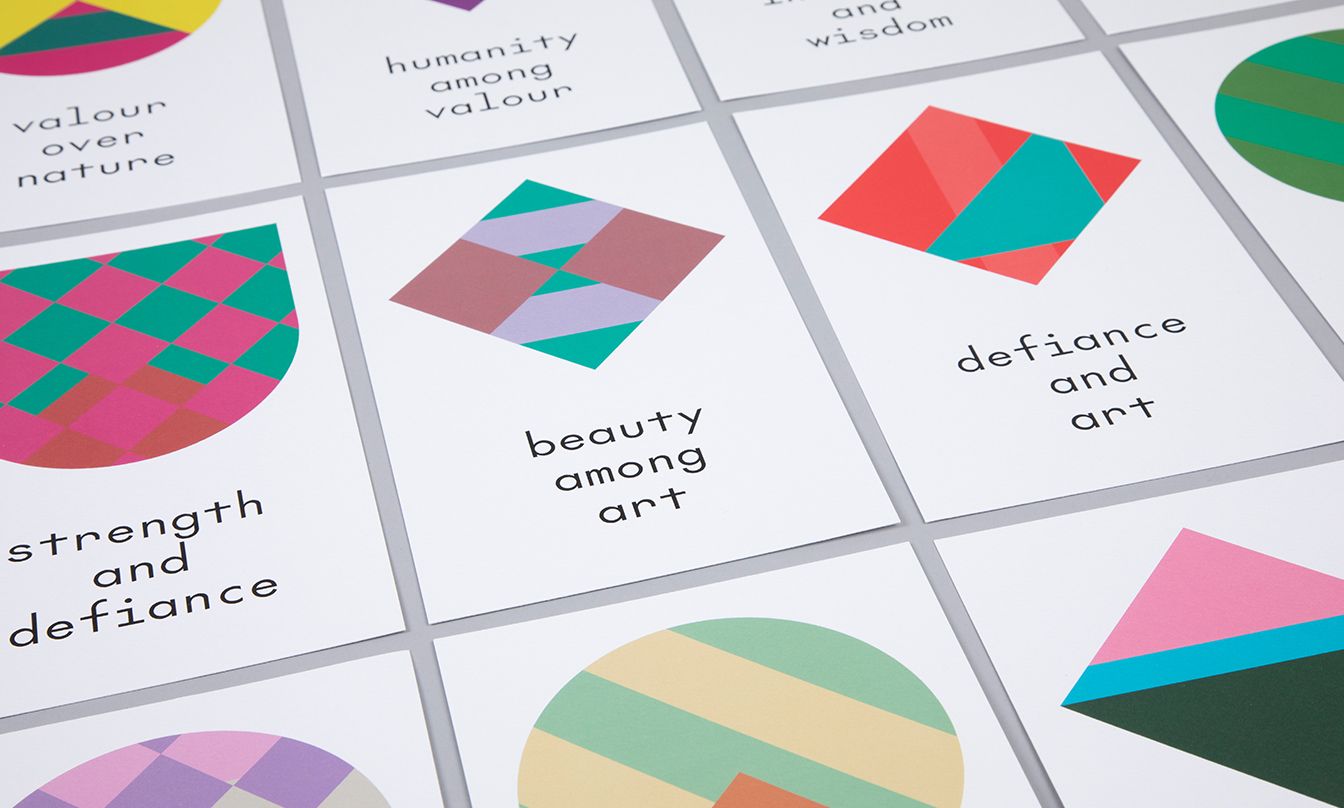
The printed artefacts were recently exhibited at the Fedrigoni London Studio, and Tickler also held a series of workshops so that people could try out the software and, he says, ‘challenge the way they think’ about using print. ‘This software and approach seems to allow – or perhaps force – you to think differently, as the old rules and constraints no longer apply.’
HP Spark uses the open source creative coding language P5.js. Tickler hopes that designers will see the potential for collaboration with developers. ‘Just going through the process seems to help designers generate ideas and potential future uses in relation to their client work,’ he says. ‘I’ve already had a number of agencies enquire about running workshops in their studios with this in mind.’
Workshop attendee Briar Levit (see Eye 95) with a single-edition algorithmic print of Flags of No Nation from Fusing Frontiers.
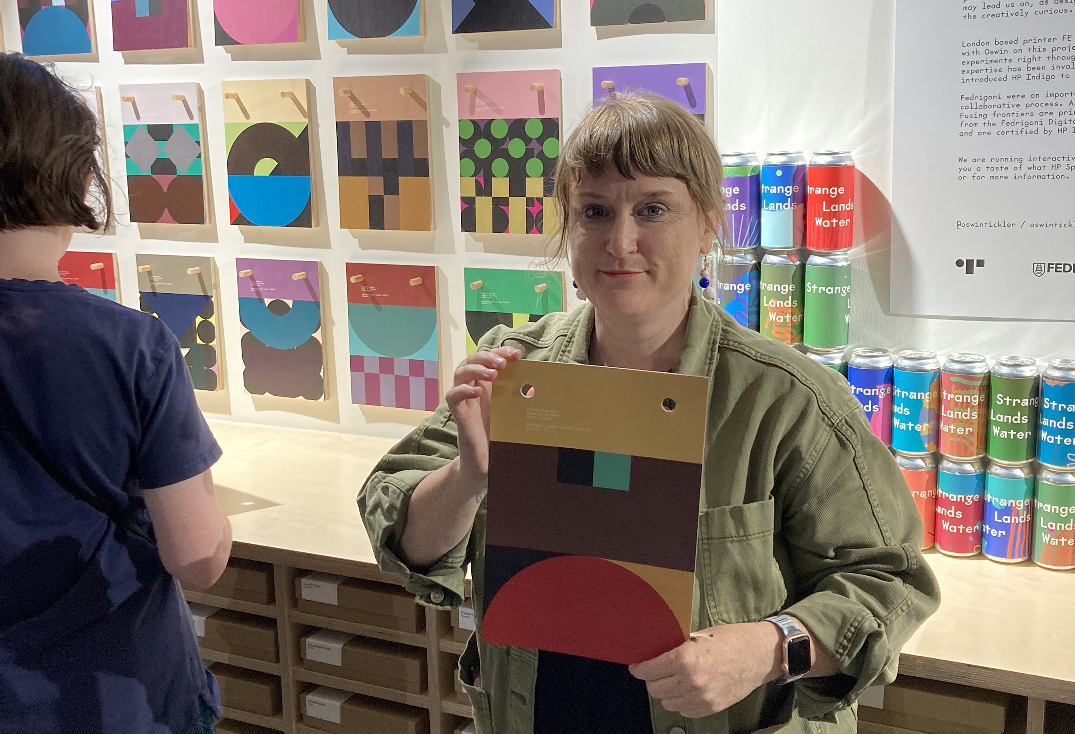
The random nature of what HP Spark can produce could also become part of a designer’s process, Tickler explains. ‘Some designers have mentioned it might even be a useful tool for generating ideas at earlier stages of the design process – not just in relation to the final outcome. Others have seen the potential to create brand assets quickly that can be used both in print and on screen.’
Tickler says the potential for its application is wide, with workshop participants already citing its relevance to printing textiles. It could work for brands that require ‘only a small amount of change between each print,’ he says, ‘and to clients that will more readily embrace experimentation and want to explore the potential for randomness and difference between each one.’
Animated gif of spreads from the Flags of No Nation booklet, with each unique design created from shared characteristics.

Tickler is also talking to educators about how the print process could be explored with students. It appeals both as an entry point to creative coding and to ‘groups quickly producing work together,’ he explains, ‘where those students who are perhaps less precious about their own work can learn to consider and embrace a sense of randomness and the unknown within print design.’
The potential directions for HP Spark are almost limitless, Tickler says. ‘This is where illustrators, artists, coders and mathematicians could collaborate with designers in order to explore the full potential of the technology. The openness of this software benefits from having these multiple perspectives, as each one will bring something new to how it can be used.’
Could digital designers become print converts? ‘That you can replicate aspects of digital design with all the tactility, quality and desirability – collectability – of print, should make them want to explore and use it,’ Tickler says. ‘It adds an extra dimension.’
HP Spark is part of HP Indigo’s Smartstream Designer suite of software, available as a plug-in for Adobe InDesign and Adobe Illustrator.
The coded print ephemera is packed inside this digitally printed Fusing Frontiers box, printed on a variety of different papers (see ‘The art of surprise’ on Pulp Digital). Each outer pack design is different, too, in typeface and pattern.
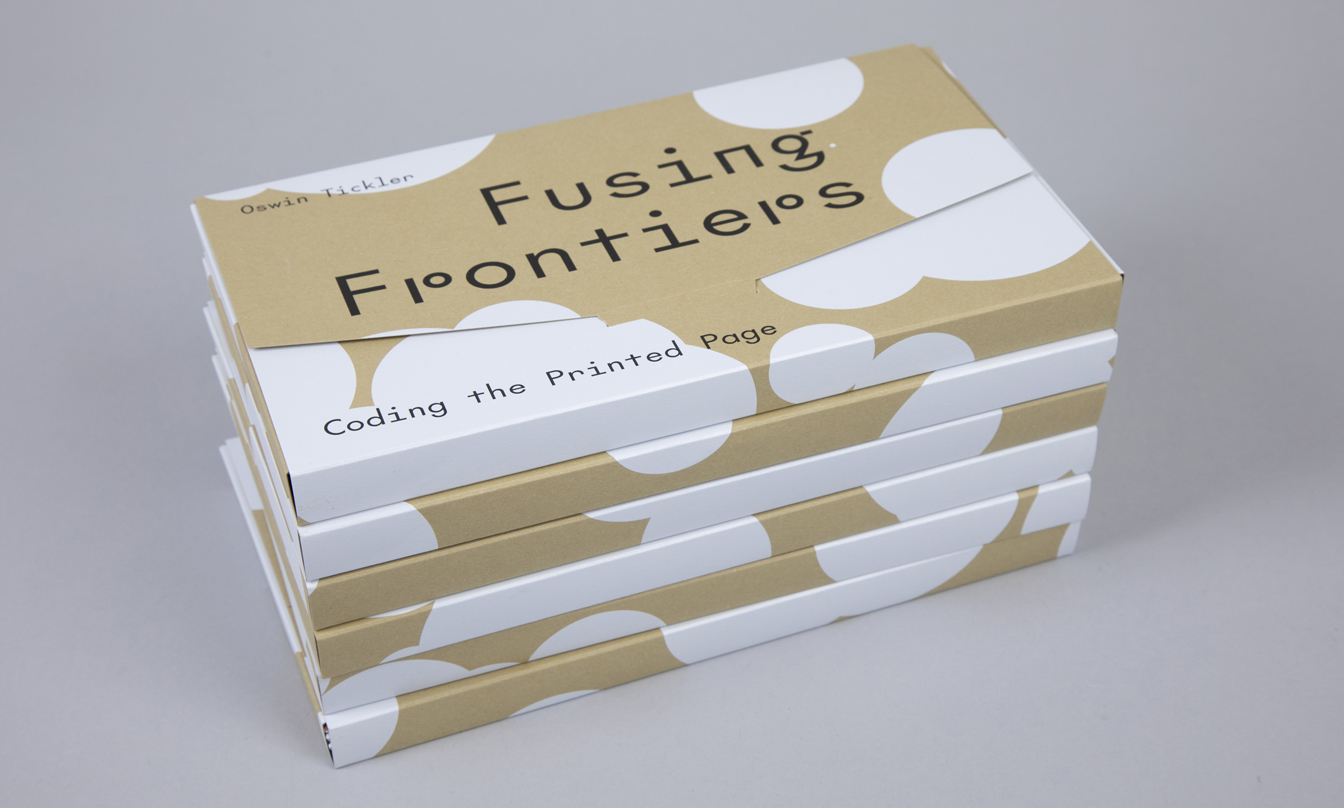
Here Be Dragons, folded maps of ‘unexplored worlds, full of creative possibility’, created using the Fusing Frontiers algorithms .
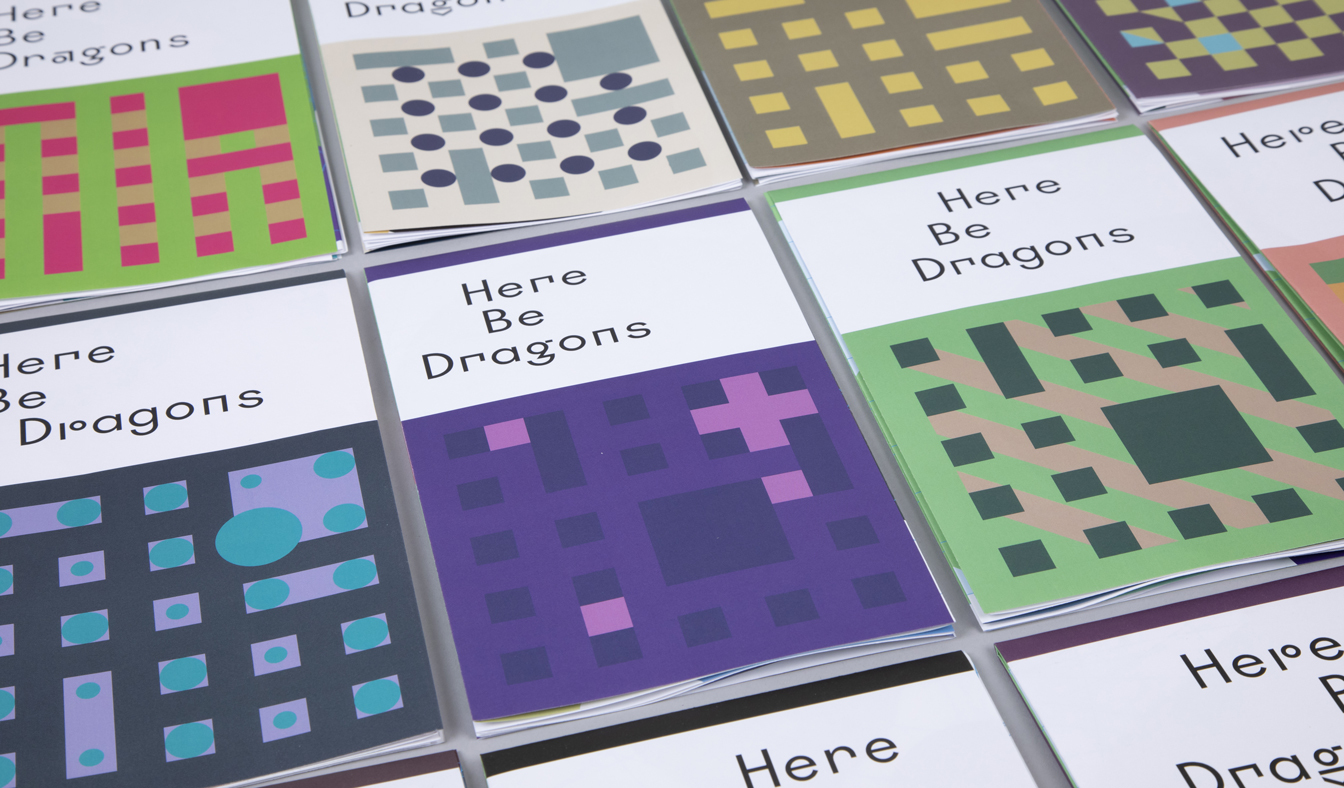
Oswin Tickler (far right) leading the ‘Fusing Frontiers: Coding The Printed Page’ workshop at the Fedrigoni studio in London.
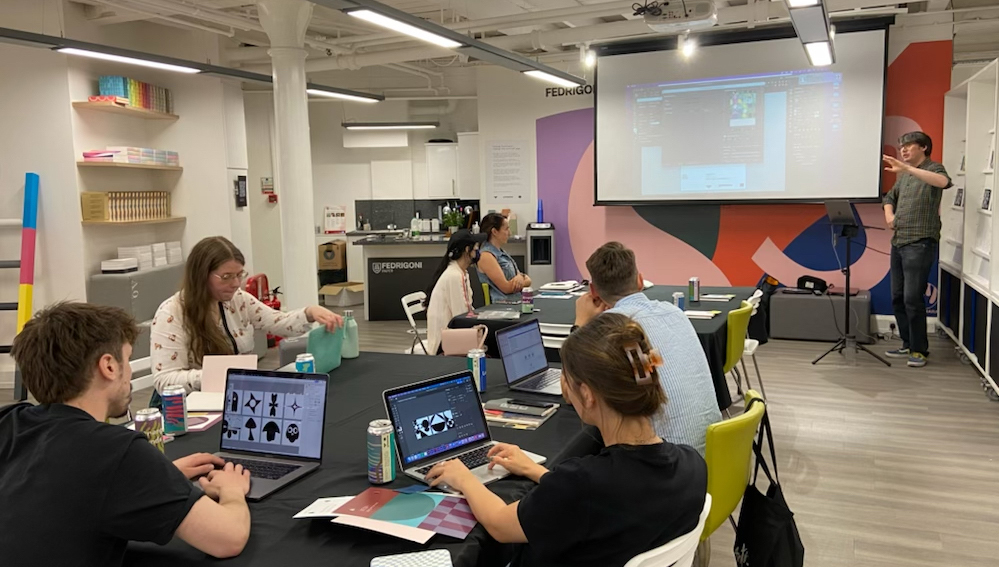
Eye is the world’s most beautiful and collectable graphic design journal, published for professional designers, students and anyone interested in critical, informed writing about graphic design and visual culture. It is available from all good design bookshops and online at the Eye shop, where you can buy subscriptions and single issues.
